A Guide to Asset Marking Solutions for Small Businesses
For small businesses, keeping track of valuable assets can be challenging. Whether it’s equipment, tools, or electronic devices, asset loss or theft can lead to significant financial setbacks. Implementing an asset marking system is a smart and effective way to protect your assets, improve inventory management, and streamline your business operations. In this post, we’ll explore various asset marking solutions suitable for small businesses.
Why Asset Marking is Important for Small Businesses
Small businesses often operate on tight margins, so asset loss can have a more significant impact. Asset marking helps mitigate this risk by providing a clear, identifiable link between the asset and its owner. This not only deters theft but also aids in the recovery of lost or stolen items. Moreover, an organised asset marking system can simplify inventory management, helping you keep track of equipment, monitor usage, and plan for maintenance or replacements.
Asset Marking Methods for Small Businesses
There are several asset marking solutions available, each suited to different business needs:
- Asset Labels: These are self-adhesive labels printed with unique identification numbers, barcodes, or QR codes. They are easy to apply and ideal for marking small items like laptops, tools, and office equipment.
- Engraving: Engraving is a permanent solution, making it perfect for marking valuable or frequently used items such as machinery and tools. It’s a highly durable method that remains visible despite wear and tear.
- Barcode Labels: Barcode labels allow you to integrate asset tracking with digital inventory systems. By scanning barcodes, you can easily log asset movements, usage, and maintenance schedules.
- QR Code Labels: Similar to barcodes, QR codes can store more detailed information and link directly to online databases. This is useful for small businesses looking to adopt a more advanced asset tracking system.
Choosing the right method depends on factors such as the type of assets, the business environment, and your budget.
Asset Marking for Security and Recovery
An essential benefit of asset marking is its deterrent effect on theft. Clearly marked items are less attractive to thieves, as they are harder to sell or use without detection. Additionally, if theft does occur, marked assets can be easily identified and traced back to the owner, increasing the chances of recovery.
For enhanced security, consider marking assets in multiple ways. For example, use a combination of visible asset labels and covert markings (such as UV ink) to provide extra layers of identification.
Streamlining Asset Management with Marking Solutions
Beyond security, asset marking is invaluable for managing inventory. By assigning unique identification numbers to each asset, you can create a centralised inventory database. This allows for efficient tracking of asset locations, usage history, and maintenance requirements, reducing the risk of loss or mismanagement.
Small businesses can benefit greatly from implementing simple asset tracking software that works alongside barcode or QR code labels. This setup provides real-time visibility into asset status, aiding in decision-making and resource allocation.
Customisation Options
Many asset marking solutions can be customised to include your business name, logo, and contact information. This not only reinforces your brand identity but also provides an extra layer of security by making it clear who the rightful owner is. When ordering custom labels, consider using tamper-evident materials, which show clear signs of tampering if an attempt is made to remove them.
Implementing an Asset Marking System
To effectively implement an asset marking system, follow these steps:
- Create an Asset Inventory: Compile a list of all assets you want to mark, categorising them based on their value, usage, and location.
- Choose Marking Methods: Select the most suitable marking solutions for each category of assets.
- Apply Markings: Label, engrave, or mark each asset as appropriate. Ensure that markings are applied in a consistent, visible manner.
- Set Up a Tracking System: Integrate your marked assets with an asset tracking system, using barcode or QR code scanning for efficient management.
- Regular Audits: Conduct regular audits to verify asset locations and conditions, updating records as necessary.
Conclusion
Asset marking is a straightforward yet effective way for small businesses to protect valuable assets, streamline inventory management, and reduce the risk of loss or theft. By choosing the right marking methods and implementing an organised tracking system, you can enhance your business operations and safeguard your investments. In the long run, asset marking provides peace of mind and contributes to the smooth running of your business.


Comments are closed